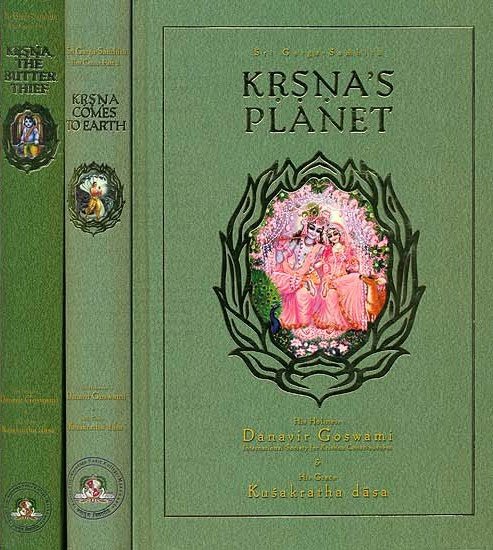Garga Samhita (English)
by Danavir Goswami | 425,489 words
The Garga-samhita Verse 2.16.17, English translation, including word-by-word: This text represents a Vaishnava scripture which narrates the life Krishna, It was composed in seventeen cantos by Garga Muni: an ancient sage and priest of the Yadu dynasty having. This is verse 2 of Chapter 16 (The Worship of Tulasi) of Canto 2 (vrindavana-khanda).
Verse 2.16.17
Sanskrit text, transliteration and word-by-word meaning:
तुलस्याः सखि माहात्म्यं
आदिदेवश् चतुर्-मुखः
न समर्थो भवेद् वक्तुं
यथा देवस्य शार्ङ्गिणः
tulasyāḥ sakhi māhātmyaṃ
ādidevaś catur-mukhaḥ
na samartho bhaved vaktuṃ
yathā devasya śārṅgiṇaḥ
tulasyāḥ—of Tulasī; sakhi—) friend; māhātmyam—the glory; ādidevaś—Brahmā; catur-mukhaḥ—who has four heads; na—not; samarthaḥ—is able; bhavet—may be; vaktum—to speak; yathā—as; devasya—of the Lord; śārṅgiṇaḥ—who carries the śārṅga bow.
English translation of verse 2.16.17:
O friend, as four-faced Brahmā cannot describe all the glories of Lord Kṛṣṇa, who holds the śārṅga bow, so he cannot descibe all the glories of Tulasī.
